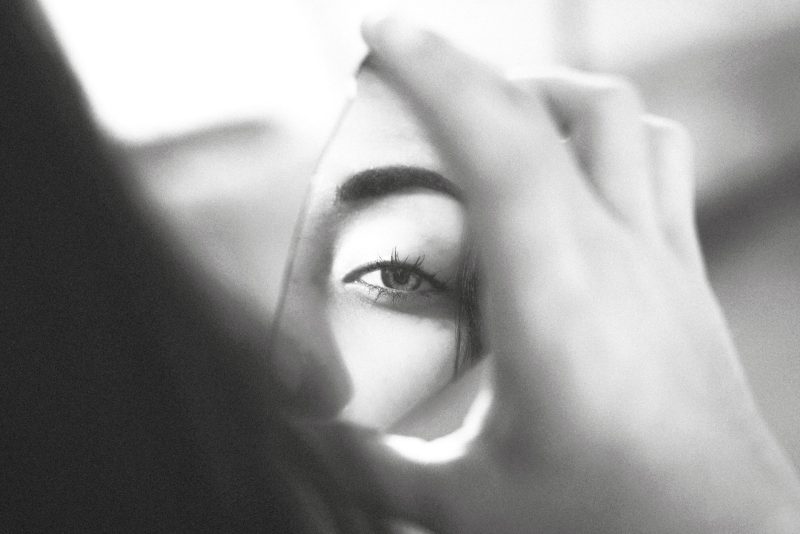A famous actress who starred in Riverdale, Lily Reinhart once opened up about her discomfort with her body. She stated that she had significant insecurity about her breakout acne since its first onset in the seventh grade. The insecurity had gotten worse over time and later she developed a dysmorphic image of her body. She had struggled with looking at herself in the mirror and going out in public, even saying she wanted to hide her face.
Another famous person who spoke up about their dysmorphic image of their bodies, is today’s worldwide pop star, Billie Eilish. Billie stated in one interview that she has a horrible and unhealthy relationship with her body. She mentioned that whatever she wears, either baggy clothes or sexy ones, she always gets critics and felt she couldn’t satisfy anyone. As a result of this severe condition, she had a bad image of her body and a negative perspective on her mental health.
The condition that Billie and Lily experienced about the destructive images of their bodies leads to a more serious condition called body dysmorphia or often also known as body dysmorphic disorder. This condition is one of the major mental health problems which affects men and women equally in any age range.
In most common cases of developing a dysmorphic image of one’s body, sufferers will spend hours obsessing over real or imagined flaws and take extreme measures to hide these flaws.
To make sure you fully comprehend what body dysmorphia is, this article will help you to understand the disorder in general and what you can do about it.
Defining body dysmorphia
Body dysmorphia or medically known as body dysmorphic disorder (BDD), is a mental health condition that DSM 5 defined as “a preoccupation with a perceived defect or flaw in one’s physical appearance that is either not noticeable or only slightly observable by others” (Nicewicz & Boutrouille, 2022). This means those who suffer from BDD will experience persistent and intrusive obsession over one or more minor or slight defects, even imagined ones in their appearance.
People with BDD will dislike any parts of their body, although sometimes the “flaw” or “defect” they refer to can only be seen from their perspective. These kinds of persistent thoughts about their flaw are prominent. They stay for a long time along with persistent stress and intrusive obsession with hiding their flaw from the public. As a result, there will be a great deal of emotional distress and difficulties in functioning day-to-day.
Anxiety and Depression Association in America (2022) stated that BDD is often developed in adolescents and young adults and equally affects both men and women.
In research by Veale, Gledhill, Christodoulou, & Hodsoll (2016), it was found that BDD was estimated to occur in 2.2% of adolescent populations and 3.3% of student populations. The research also found that BDD is majorly found in the cosmetic and dermatology industry.
Symptoms of body dysmorphia
Symptoms of BDD will grow gradually over time. As part of the clear diagnostic criteria, one must engage in repetitive behaviors during the illness, such as excessive mirror checking, camouflaging (covering up defects with makeup, clothing, etc.), skin plucking, obsessive grooming, excessive weight lifting, or widespread mental activities such as comparing one’s looks, which cause great distress to the sufferers. People with BDD are also seen to have a lack of self-control over these maladaptive behaviors.
People with BDD spend around 3 to 8 hours each day engaging in these excessive activities since they are so prevalent.
In most cases, perceived physical flaws affect the skin, hair, or nose, but they can affect any part of the body. A person with this disorder has a preoccupation with five to seven different body parts throughout their lifetime.
Muscle dysmorphia is a subcategory of BDD in which individuals perceive their muscles to be inadequate or too small.
There is also BDD by proxy, in which an individual becomes obsessed with a perceived physical defect in another individual.
Treatments for body dysmorphic disorder
As body dysmorphic disorder is strictly a mental health medical issue, every diagnosis and treatment should be only done by professionals. Individuals with BDD can reach out to professional help like psychologists and psychiatrists to have an in-depth understanding of their condition and undergo therapy.
BDD treatment is mostly a combination of psychotherapy and pharmacology interventions. Psychotherapy for BDD usually involves cognitive behavioral therapy (CBT), an approach that uses a combination of behavioral experiments, exposure, and response prevention to understand and treat the problem (Veale, 2010).
In pharmacology interventions, doctors often use selective serotonin reuptake inhibitors (SSRIs) (Hong, Nezgovorova, & Hollander 2018).
If you notice symptoms of having body dysmorphic disorder before it severely disturbs your daily life functioning, please reach out to your nearest healthcare provider to get a proper intervention.
Preventing body dysmorphia
As far as research is known to this day, there is still no clear cure and exact prevention methods for body dysmorphic disorder. Body dysmorphia starts at an early age, so detecting the symptoms as early as you can make a difference.
Most cases have their first onset development in teenage age and it can get worse over time. Consult your healthcare practitioner if you have a youngster or adolescent who appears too concerned about their looks and needs regular reassurance. Consult a mental health specialist or your healthcare provider if you have BDD symptoms. Regular therapy will help to avoid BDD from relapsing in the future.
In conclusion
Body dysmorphic disorder (BDD) is a mental health disorder. While occasionally the “flaw” or “defect” they allude to may only be from their perspective alone, people with BDD will loathe any areas of their body. These types of persistent thoughts about their defect are obvious, they last for a long time, combined with persistent worry and an invasive fixation with hiding the imperfection from others. There will be a lot of emotional discomforts as a result, as well as challenges in coping daily. Treatment for BDD will be done through medical and psychological methods under a professional’s administration, and early intervention will prevent BDD from getting worse in the future.
If you would like to learn more about maintaining good body image, visit the Personal Science Labs. Using the research of the Institute for Life Management Science, the lab produces courses, certifications, podcasts, videos, and other learning materials. Check out Personal Science Labs today.
Photo by Ismael Sánchez



